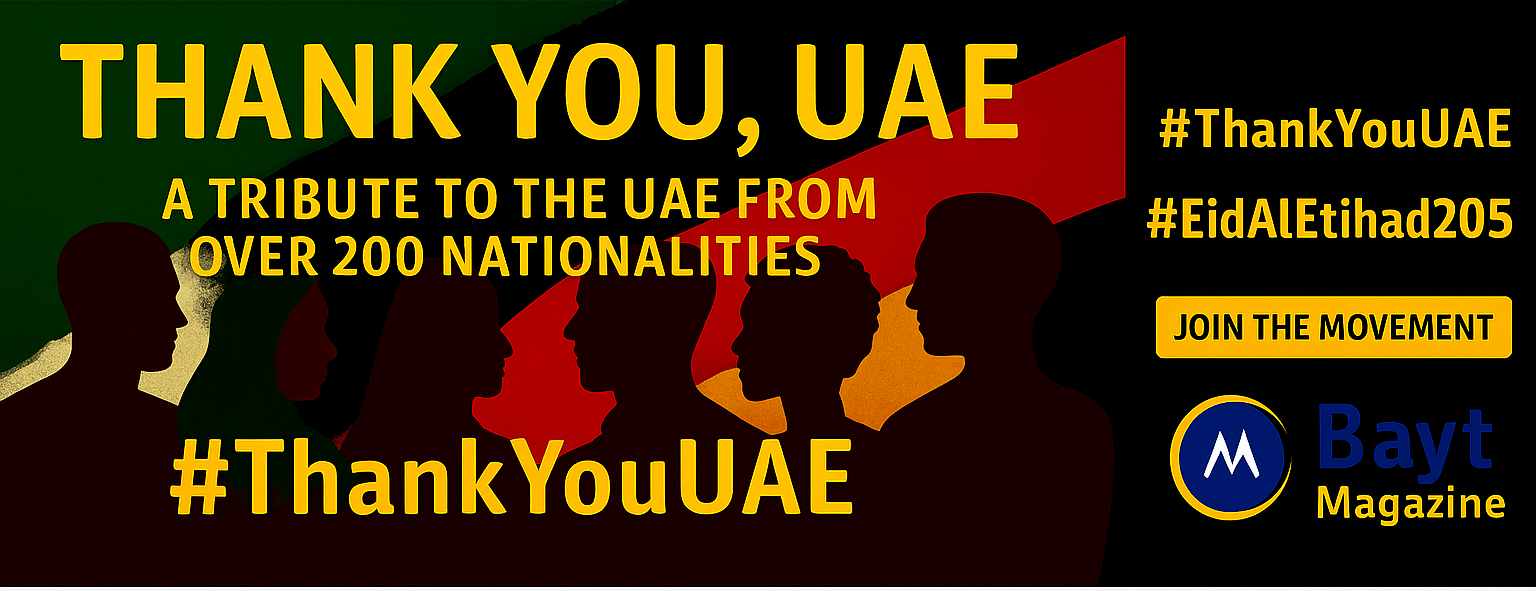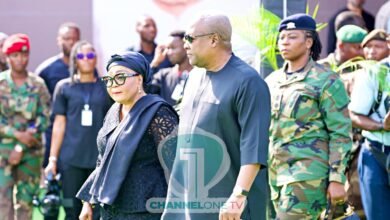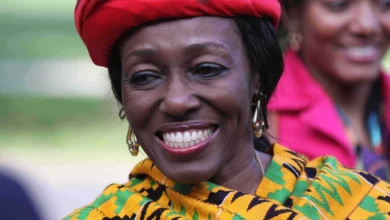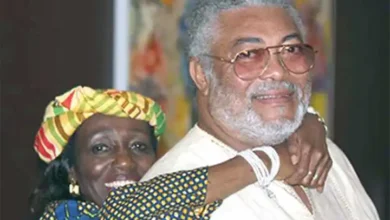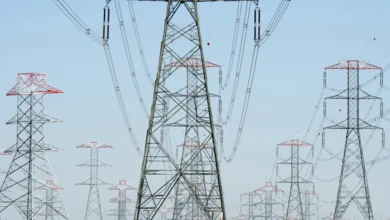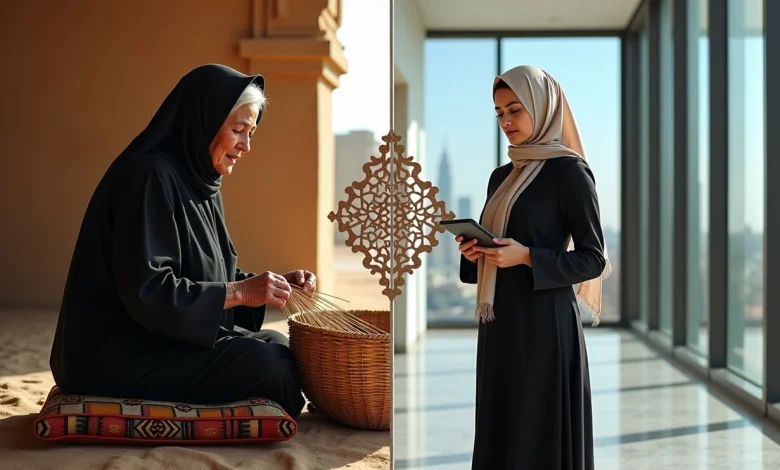
Sand, Steel, and Spirit: The Emirati Woman’s Journey from Tradition to Transformation
The remarkable transformation of Emirati women from traditional roles to modern leadership stands as one of the most significant social developments in the Middle East. The United Arab Emirates now has 50% female representation in the Federal National Council (FNC). This achievement challenges old beliefs about women’s roles in Arab societies and signals deeper changes that are revolutionizing women’s lives in the Emirates.
Women’s educational achievements tell an impressive story. About 77% of Emirati women pursue higher education after secondary school, which exceeds the numbers in many Western nations. This strong educational foundation has reshaped the workforce. Women now make up 28% of the UAE’s labor market and hold 66% of public sector jobs. Their presence in leadership is equally notable – they occupy 30% of senior leadership positions. The diplomatic corps includes 42.5% women, with eleven serving as ambassadors or consuls.
This piece delves into how Emirati women balance traditional values with modern aspirations. It shows their ability to maintain cultural identity while embracing progress, highlights the changing viewpoints across generations, and demonstrates their increasing role in building the nation’s future.
Tradition and Transition: The Roots of Emirati Womanhood
“A woman constitutes half the society and keeps the house. A country aspiring to build itself should not keep a woman in the darkness of illiteracy and a prisoner to the shackles of oppression.” — Sheik Zayed bin Sultan Al Nahyan, Founding Father of the UAE; First President of the United Arab Emirates
The roots of Emirati womanhood run deep into the harsh desert landscape that shaped life before anyone found oil. Life in what would later become the United Arab Emirates focused on survival rather than prosperity until the 1960s.
Life before oil: survival, family, and community
Emiratis lived in small, tight-knit communities before oil altered the region’s map. Families produced just enough to survive. Their daily life revolved around fishing, pearl diving, boat-building, date harvesting, and raising animals. The harsh conditions of this pre-oil period led to early deaths, and people spent their days trying to stay alive. They had little fresh water, no healthcare, and could only work to feed themselves.
Women played a much bigger economic role during this time than most people realize today. Their economic contributions proved vital between 1900 and 1930. Women took control of the local economy while men went to sea during pearling seasons from June to November. They did much more than household chores:
- Managed household finances and property
- Worked in agriculture and harvested dates
- Wove Sadu (traditional embroidery) for housing and income
- Practiced folk medicine for both men and women
- Traded and sold fish, often getting better prices than men
Royal women like Sheikha Hessa bint Al-Murr led armed forces to protect Dubai’s fort during attacks. Sheik Zayed’s mother, Sheikha Salama bint Butti Al Qubaisi, helped her son financially when Al Ain’s economy struggled before oil was found.
The change from Gemeinschaft to Gesellschaft
Oil discovery brought a dramatic transformation to the UAE. Sociologists call this a classic transition from Gemeinschaft to Gesellschaft environments. This means a change from close-knit, similar rural communities with informal education and basic economies (Gemeinschaft) to societies built on wealth, formal education, advanced technology, and global trade (Gesellschaft).
This change completely reshaped Emirati society. People in Gemeinschaft settings shared group consciousness and valued working together, seeing themselves as connected. Gesellschaft environments, however, promote individual thinking, personal freedom, and self-expression.
Women’s roles grew beyond the home as the UAE developed rapidly after finding oil in the 1960s. In spite of that, this created what sociologists call “in-betweenness”—cultural spaces where old and new values exist side by side. This explains why small Gemeinschaft communities can thrive within larger Gesellschaft societies, creating the complex cultural world Emirati women must direct today.
Cultural values passed through generations
Family remains central to UAE society even after massive economic changes. It serves as the place where culture, tradition, and values pass from one generation to the next. Women stand at the heart of this family structure and play a crucial role in keeping Emirati identity alive.
Social and economic changes affected family life differently. Research shows strong effects on wealth, openness to different cultures, and family ties, but less impact on family values, norms, traditions, and language. The core cultural elements stayed strong even as external circumstances changed dramatically.
Women’s role as cultural guardians explains this strength. Throughout history, women taught crafts, stories, and cultural practices that kept Emirati identity strong through generations of change. Modern educated mothers now pass values of knowledge, hard work, and ambition to their children, inspiring a new generation of young Emiratis.
The shift from traditional to modern life hasn’t erased family values—respect for elders, care for children, and support for spouses. Instead, Emirati women now guard tradition while driving change, writing tomorrow’s story based on yesterday’s lessons and explaining the past to future generations.
Ambivalence and Adaptation in a Rapidly Changing Society
The balance between tradition and modernization creates complex emotions for Emirati women. UAE’s transformation from quiet desert settlements into a global powerhouse has led its citizens to find ways to cherish their cultural heritage while accepting progress.
Mixed feelings about modernization
UAE citizens often discuss the balance between Emirati traditions and our globalized world. This balance isn’t simple – traditions represent craft-based practices from pre-industrial times, while globalization brings modern ways of life. Many Emiratis have mixed feelings about their homeland’s rapid transformation.
Women appreciate economic growth but worry about its speed. Research shows Emirati women value Dubai’s development yet feel uncertain about their cultural future. Maitha, a local resident, shares her perspective: “Dubai is not what it used to be. Before, we had calm streets and less people… Now, all the people and the cars are making our city too crowded”. These views show neither complete rejection nor blind acceptance of modern changes.
The ASDA’A Burson-Marsteller Arab Youth Survey reveals interesting numbers: 57% of young Emiratis believe traditional values matter and need preservation, while 43% see modern values as more relevant. Young generations seem to value both traditional and contemporary life.
Concerns over cultural erosion
Global brands and international influences spread through daily life, making many Emirati women worry about losing their culture. Their concerns include:
- Young women using the abaya “for design” instead of religious purposes
- Western media affecting children’s behavior and appearance
- Religious celebrations like Eid al-Fitr becoming too commercial
- Arabic language usage declining in English-dominated spaces
Professional women who welcome career opportunities still worry about keeping their cultural identity. A young Emirati explains: “I know my sister’s kids. It’s very hard to sustain this culture anymore. Social media, iPad—they influence them. We want to keep this culture”. Rural relatives at formal gatherings sometimes make urban Emiratis uncomfortable by reminding them of their modest beginnings.
Foreigners now outnumber citizens in UAE, which adds to these worries. Laila, another resident, shares: “We are very strong and powerful, but I feel that our culture sometimes is not respected”. Such thoughts show real concern about preserving culture during rapid social change.
Balancing pride in progress with nostalgia
Emirati women take great pride in their nation’s achievements. UAE has grown into a powerhouse with modern infrastructure, excellent healthcare, and strong education systems—all while keeping cultural connections. Traditional festivals, desert activities like camel racing and falconry, and heritage-inspired architecture show this balance.
Viewing Arab societies as inflexible or backward misses the complex reality of modern UAE life. Many Emiratis blend their beliefs, modern values, and global outlook with family commitments without seeing conflicts. This suggests the gap between tradition and modernity might be smaller than outsiders think.
Samuel Huntington’s idea about Western and Islamic values clashing doesn’t match Emirati women’s experiences, as they create their own cultural mix. One observer notes: “If there is one factor that runs through art stories that I looked at, it’s change. And that is a fantastic and inspiring thing”. Emiratis show how to honor the past while building the future.
Preserving Identity Through Fashion and Ritual
Image Source: MyBatua.com
The elegant black abaya flows against a backdrop of ultra-modern skyscrapers, symbolizing how Emirati women keep their cultural identity in a fast-changing society. Traditional clothing does more than meets the eye – it connects people to their heritage while letting them express themselves in today’s UAE society.
The evolving meaning of the abaya
The abaya’s remarkable journey mirrors the changes in society at large. This garment was rare in the UAE until about 60-70 years ago. Only the elite wore it, mainly during special events like wedding processions. Everything changed with the 1960s oil boom. New wealth, city life, and global influences made the Abayat Ras – a black silk version worn from the head – increasingly popular.
Women’s entry into higher education and the workforce brought the biggest changes in the 1980s. The head-draped style gave way to today’s shoulder abaya with fitted sleeves. This new design suited modern life better. Reem Al Mutwalli, a UAE heritage expert, explains: “They began to drive, they began to work on computers, and began to go into the workforce so the head aba was no longer suitable to be worn”.
The 1990s brought luxurious fabrics and decorations, mostly in black-on-black patterns with matching shaylahs. The early 2000s became a time of bold experiments. Designs featured narrow waists, wide belts, and hooded headcovers that showed western influences. Emirati women have started wearing colored shaylahs and decorations that match international fashion trends.
Cultural codes in public vs. private spaces
Emirati society follows different dress codes for public and private spaces, reflecting deep cultural values. Emirati women wear modest clothes in public to honor tradition and religious values. While expatriate women don’t need to wear abayas, they should respect local culture by covering their shoulders and knees – especially in conservative emirates like Sharjah or Ajman.
Private settings tell a different story. At home, Emirati women often wear completely different clothes, including the mukhawar – a traditional house dress for both practical use and celebrations. The mukhawar started as everyday wear for modesty and comfort in the desert climate. Now it’s special occasion wear for family gatherings and Ramadan evenings.
Religious spaces have their own rules. Women visiting mosques – including tourists – must wear an abaya and headscarf, usually available at the entrance.
Fashion as both resistance and expression
Today’s Emirati women use fashion to preserve culture and strengthen their identity. The modern abaya has surpassed its original role, becoming “an outfit in its own right” instead of just covering other clothes. This change lets women honor their heritage while joining global fashion conversations.
Emirati women lead these changes with their resources and worldwide exposure to try new designs. Modern abayas showcase:
- Intricate embroidery, lace details, and luxury fabrics
- Open-front styles, layered designs, and kimono-inspired silhouettes
- Vibrant colors beyond traditional black
- Contemporary cuts that stay modest while following fashion trends
Dr. Reem El Mutwalli points out: “To the untrained eye, the abaya may seem unchanged, but it is not so”. These subtle innovations help Emirati women find their path between tradition and modernity.
Traditional dress remains vital to national identity. As Emirati society faces rapid changes and growing expatriate influence, fashion connects people to their cultural heritage. Dr. Mutwalli stresses this point: “It’s very important for the sake of national identity and heritage, that all Emiratis understand their dress… and continue to experiment and use it, so that it will stay as part of their culture”.
Selective Embrace of Globalization
Emirati national identity exists as a social construct that changes continuously. Emirati women guide through globalization with careful selection, choosing global cultural elements that match their values while modifying or rejecting others.
Choosing brands that line up with local values
Global consumer culture has changed UAE shopping habits, yet Emirati women make thoughtful purchasing decisions. Their brand choices reflect deep cultural values beyond simple consumption. To cite an instance, Emirati women support global brands that show respect for local sensibilities. Global luxury houses understand this relationship well – thirty-five out of fifty top international brands like Prada, Louis Vuitton, Dior, and Gucci now offer specialized Ramadan collections.
Hadeel Yehia, a 22-year-old Emirati, shows this selective approach. She looks for brands that support certain causes, which leads her to prefer local brands. This pattern goes beyond fashion into daily life. A young Emirati woman named Zhara sees Starbucks as “like our local tradition,” saying: “We always meet at Starbucks coffee shop, in the Mall of the Emirates, at the Dubai Mall or in Jumeirah; it is always Starbucks”. Her words show how local cultural frameworks can blend with global brands naturally.
Creating a uniquely Emirati version of modernity
Emirati women shape their distinctive version of modernity by incorporating global influences while keeping their cultural specificity. Public discussions about national identity highlight how modernity and tradition can exist together harmoniously. This creates what sociologists call a “glocal” approach—where local and global elements mix to create something uniquely Emirati.
UAE’s luxury fashion brands understand this relationship. They position themselves as cultural symbols that appeal to both local pride and global aspirations. Khadija Al Bastaki, senior vice president of Dubai Design District, emphasizes: “We, as Middle Easterns, are not interested in a brand if it’s irrelevant to us. Develop products and activations in line with the local taste and priorities”.
Examples of glocalization in daily life
Glocalization—where global influences weave into local contexts—appears throughout Emirati women’s daily lives:
- Fashion adaptations: Modest fashion remains most important in the luxury market. UAE-born brands design high-end pieces that respect cultural values while offering modern interpretations. The abaya’s development shows this trend as it keeps its cultural significance while adding contemporary elements.
- Cultural celebrations: Abu Dhabi Festival and Qasr Al Hosn Festival celebrate traditional and contemporary art forms. These events provide platforms for local and international artists that preserve heritage while welcoming innovation.
- Hospitality settings: Abu Dhabi’s luxury hotels and resorts, such as Emirates Palace and Qasr Al Sarab, showcase Arabian hospitality with state-of-the-art amenities. Their designs blend traditional Arabic architecture with modern conveniences.
Emirati women retain control over which aspects of globalization they add to their lives. They actively select, transform, and reinterpret external influences to match their values and aspirations, creating their distinct path to modernity.
Intergenerational Shifts in Values and Roles
Image Source: Getty Images
The UAE’s three-generation family portrait shows a remarkable change in society. Women’s roles have transformed in just a few decades. This change goes beyond lifestyle to reshape core values and expectations.
Grandmothers, mothers, and daughters: a comparative view
A study of eight Emirati family triads from different tribes reveals stark contrasts between generations. Grandmothers married between ages 11-15, usually without consent, to cousins chosen by patriarchal authorities. Their daughters, the mothers, caught the first wave of modernization but struggled between old customs and new opportunities. Today’s daughters have university degrees and careers. They show strong egalitarian views about marriage and family. A grandmother remarked, “Girls are better than boys now… They are financially independent… They take good care of us… They are more educated than men”.
Changing views on marriage, education, and work
Marriage trends show these generational gaps most clearly:
- Average marriage age grew from 23.7 in 1995 to 25.9 in recent years
- By 2008, about 50% of Emirati women over 30 remained unmarried, rising to 60% today
- Women’s employment rose from 9.6% in 1985 to 14.7% in 2003
- Women make up 77% of higher education enrollment—the highest rate worldwide
A 21-year-old student shared her father’s words: “This is what my father told us: ‘You graduate, and then you get married'”. Many mothers support this change. One mother spoke firmly about arranged marriages: “My generation accepted this practice because we had no choice… I will not let his traditional mindset determine the future life of my kids”.
The role of family in shaping modern aspirations
Family remains the core social unit through these changes. Mothers and grandmothers often push their daughters toward opportunities they never had. Mother A observed, “Girls used to be a burden on the family in the past… Now with education and women empowerment, girls became a source of income and a person to rely on in the family. Girls are the source of modernization in the family as well as social agents of change”.
Emirati daughters forge new paths while keeping strong family bonds. They balance growing independence with tradition. Researchers describe this as a “heightened tension between traditional and modern cultural values” that defines today’s Emirati womanhood.
The Spirit of the Future: Agency, Voice, and Vision

Image Source: UN Sustainable Development Group – the United Nations
“Emirati women have achieved successes that inspired the entire world. Today, they have aspirations and ambitions to create a prosperous and sustainable future.” — Sheikha Fatima bint Mubarak, Mother of the Nation; Chairwoman of the General Women’s Union, Supreme Chairwoman of the Family Development Foundation, President of the Supreme Council for Motherhood and Childhood
Emirati women today do more than adapt to change – they actively shape their national narrative through groundbreaking leadership roles and forward-thinking initiatives.
Women as architects of national identity
The UAE stands among global leaders in parliamentary gender balance, with women holding 50% of Federal National Council seats. Women lead 26% of ministerial positions and manage vital portfolios such as education, climate change, and community development. The public sector workforce shows remarkable female representation at 66% – one of the highest rates worldwide. Emirati businesswomen’s economic influence continues to grow as over 23,000 of them run projects valued above AED 50 billion.
Youth-led movements and digital activism
Young Emirati women now make use of digital platforms to champion their chosen causes. Climate justice activist Ayshka Najib works together with UNICEF to build youth capacity across the MENA region. She understands how climate change affects marginalized groups disproportionately. Hoor Alrais started with local community clean-ups before her initiatives grew larger. These examples show how youth-led movements use social media to mobilize quickly and share information about climate action and gender equality.
Vision 2030 and the role of women in shaping it
The UAE’s Gender Balance Council has set new requirements for private companies to include women in 30% of leadership positions by 2025. This decision lines up with the National Strategy for Empowerment of Emirati Women 2023-2031, “We Work Together for Tomorrow”. The strategy creates a complete framework that helps government, private sector, and civil society position UAE among advanced nations in women’s empowerment.
Emirati women today represent a powerful blend of heritage and progress. Their story challenges common perceptions about women in the Arab world. These women have created their own unique path that honors their roots while reaching for new horizons.
These women have shown remarkable wisdom in selecting which global trends to welcome and which traditions to keep. The modern abaya symbolizes this careful balance. It maintains modesty while showcasing personal style and artistic expression.
The pace of change becomes clear when we look across generations. Today’s grandmothers who had arranged marriages as teenagers now cheer on their granddaughters who pursue PhDs and leadership roles. This family-centered approach has created room for women’s growth while keeping social bonds strong.
Emirati women have moved beyond their traditional roles as cultural guardians. They now actively shape national policies, business strategies, and social initiatives. Their strong presence in government, business, and diplomacy shows their real power in steering the UAE’s future.
The story of Emirati women teaches us valuable lessons about managing change with purpose and grace. Living between desert traditions and modern cities, they show how societies can grow without losing their core values. Their careful adoption of global trends while preserving cultural heritage offers insights to countries worldwide.
Sand, steel, and spirit remain the core elements of an Emirati woman’s identity as she continues to write her nation’s story. Her achievements prove that tradition and progress can work together as strengths. This creates a society that values both its past and its promising future.


